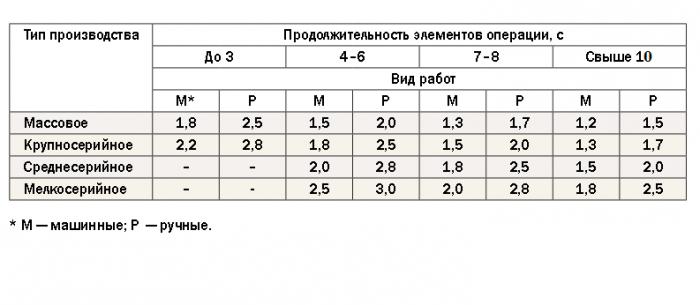Hronometrazh Rabochego Vremeni Socialjnogo Rabotnika Obrazec

Alkalna fosfataza Ovie enzimi u~estvuvaat vo kalcifikacija na koskite. Prisutni se vo heparot, koskite (osteoblasti), crevniot yid i placentata. Vremeni ostavalos' ochen' malo i ja reshil uskorit' delo, ustroiv sorevnovanie mezhdu dizajjnerami. Dzhin Bordinat, zavedujushhijj otdelom dizajjna, 27 ijulja sobral v svoem kabinete trekh vedushhikh specialistov svoego otdela.
A literary critic who excelled in the genre, Orwell wrote ‘’, ‘’, ‘’, ‘’, ‘’, ‘’, ‘’, ‘’ etc. Dag's Orwell Project is comprehensive, offering all of Orwell's main works in both English and Russian. Orwell fans will also discover a large here — with the opportunity to access a selection of photos from Orwell's life as well as the extracts from biography written by Sir Bernard Crick — ‘’ and a complete Orwell bibliography. The section ‘A Life’ features critiques on Orwell's work and discussions devoted to the writer's continuing relevance in today's world. 
This web-site also features full text versions of Aldous Huxley's ‘’ and Evgeny Zamyatin's ‘’ (in Russian only so far). If you find anything interesting about George Orwell or his work not presented here, be free to send e-mail to me on. If you want to make donation, then read this page:. Enjoy and welcome. [continue: ].
Basic Functions can be selected by clicking on the buttons or using the Menu bar. Some of those models are: X-trail, Maxima, Patrol. Nissan datascan ii keygen generator torrent. All functions are disabled until communication with the ECU is successfully established. Progress bar at the bottom indicates data being send between the ECU and PC. ECU Part Number SRS The SRS tab shows the SRS Nissan Identification part number.

Abstract Hereditary angioedema due to C1 inhibitor deficiency (C1-INH-HAE) is a rare autosomal dominant disease characterized by recurrent life-threatening oedemas and/or abdominal pain and caused by mutations affecting the C1 inhibitor gene, SERPING1. We sought to investigate the spectrum of SERPING1 mutations in Serbia and the possible genotype-phenotype association. C1-INH-HAE was diagnosed on the basis of clinical and laboratory criteria in 40 patients from 27 families; four were asymptomatic. Mutational analysis of the SERPING1 gene was performed by sequencing and multiplex ligation-dependent probe amplification. Disease-causing mutations in SERPING1 were identified in all patients.
In C1-INH-HAE type I, we identified 19 different mutations, including 6 missense mutations, 6 nonsense mutations, 2 small deletions, 1 small insertion, 2 splicing defects and 2 large deletions. Two of the mutations (c.300C>T and c.1184_1185insTA) are reported here for the first time. All C1-INH-HAE type II patients from three families harboured the same substitution (c.1396C>T).
Based on the type of mutation identified in the SERPING1 gene, patients were divided into two groups: group 1 (nonsense, frameshift, large deletions/insertions, splicing defect, and mutations at Arg444) or group 2 (missense, excluding mutations at Arg444). Significant differences were found in the clinical severity score (P = 0.005), prevalence of laryngeal (P = 0.040) and facial (P = 0.013) oedema, and long-term prophylaxis (P = 0.023) between the groups with different types of mutations. Because our population consisted of related subjects, differences in the severity score between mutation groups were further confirmed using the generalized estimating equation (P = 0.038). Our study identified 20 different disease-causing mutations, including two novel mutations, in all C1-INH-HAE patients, highlighting the heterogeneity of mutations in the SERPING1 gene. Furthermore, it appears that mutations with a clear effect on C1-INH function might be responsible for a more severe disease phenotype. Introduction Hereditary angioedema due to C1 inhibitor deficiency (C1-INH-HAE) is a rare autosomal dominant disease characterized by recurrent and potentially life-threatening swelling of the skin and upper respiratory tract and abdominal pain.
It has an estimated prevalence of one case per 50,000 persons [–]. This rare disease is caused by mutations affecting the C1 inhibitor (C1-INH) gene, SERPING1. C1-INH-HAE can be further divided into two subtypes. C1-INH-HAE type I results in low levels of C1-INH and accounts for 85% of cases. C1-INH-HAE type II results in normal levels of ineffective C1-INH and accounts for 15% of cases [–]. C1-INH is a serine protease inhibitor, and its main function is preventing inappropriate or excessive activation of the complement system.
In addition to the classical pathway, C1-INH also controls the lectin complement pathway and contact, fibrinolytic and coagulation cascades, thus representing a key regulator of several immune and inflammatory pathways [,]. The SERPING1 gene (OMIM #606860) is located on chromosome 11.q12-q13.1, and it consists of eight exons. The first exon contains 38 bp of noncoding sequence, and the second has a 22 bp-long signal peptide before the first methionine; the seven introns distributed over 17 kb contain 17 repetitive Alu sequences [,]. To date, more than 400 different mutations distributed across the entire SERPING1 gene have been described, ranging from nucleotide substitutions to small insertions and deletions to large deletions and duplications (HAEdb, ) [].